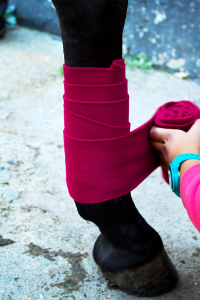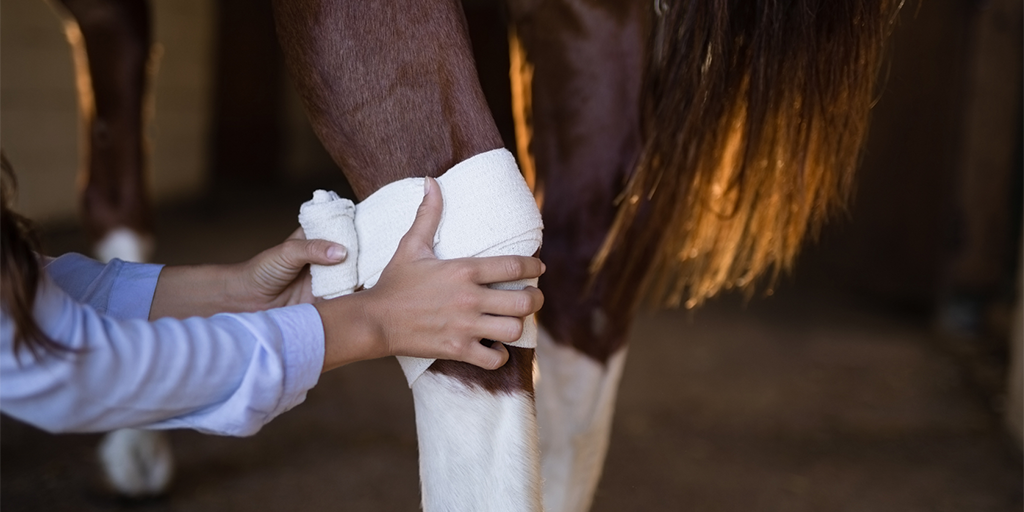It’s pretty common for horses to sustain wounds throughout their life. These can range from abrasions and small cuts to puncture wounds, or lacerations involving joints or tendon sheaths.
As with any injury, it’s important that you assess the seriousness of the wound and apply appropriate first aid without delay. Colder weather can add further complication to wound care, as the cooler air can lead to delayed healing – so being vigilant in looking for any lacerations and taking quick action is particularly important in winter.
In this blog we take you through the keys steps involved in best-practice wound management for your horse.
Step 1 – Stop any bleeding and clean the wound
Regardless of how serious your horse’s wound is, it’s important that as soon as you notice their injury, you stop any bleeding and clean the wound. The best way to stop bleeding is to apply direct pressure with a clean gauze for approximately 5 minutes. After this time, if there is an excessive amount of blood still flowing from the wound, you will need to immediately call your vet and maintain pressure until they arrive. This may mean that your horse has cut an artery, which can be a life-threatening situation.
Once the bleeding has stopped, it’s important to thoroughly – yet gently – clean the wound and surrounding area. Use a hose first to wash any dirt and debris away – the cold water will also help with reducing inflammation. Flushing the wound area with sterile saline will also help prevent infection.
Step 2 – Assess the wound
While you are cleaning the wound, take the time to thoroughly assess the area. The location of the wound, level of bleeding and checking for any lameness are all important factors when assessing the severity of your horse’s wound.
If the wound seems minor, the bleeding has been minimal, is not near a joint and your horse is moving and acting normally, then you should be able to look after it yourself with simple first aid and constant monitoring. Even if it looks like a superficial injury, it is worth taking a photo of it in case of any complications, as it may be particularly useful for your vet if treatment is required down the track.
It is important to contact your vet for assistance if:
- your horse has experienced excessive bleeding
- the wound involves their eye
- the wound involves a joint or tendon sheath
Even what appears to be a minor wound close to a joint or tendon sheath can become very serious, very quickly. Infection can take hold fast and turn into joint sepsis – which can even become life-threatening if left untreated.
Step 3 – Cover the wound
For more minor wounds that don’t require the attention of a vet, the next step is to cover the wound. Once the area is clean, you will need to apply three layers of dressing.
Firstly, apply a non-stick dressing over the wound, followed by some cotton wool for padding, and then covered by a self-adhesive bandage. Keeping wounds well covered is even more important in winter, as cold air can quickly dehydrate exposed tissue.
If you’re unsure of the best way of dressing the wound, then it’s best to contact your vet for advice.
Step 4 – Monitor the wound
Regardless of the severity of your horse’s wound, it’s important that you monitor the injury until it is completely healed. If the wound seems to be healing slowly, appears to be infected or your horse is becoming lamer, call your vet to get a thorough assessment.
Need advice? Contact the Cameron Veterinary Services team
Injuries to your animals can be very worrying. While most wounds are minor and can be treated by following the above steps, there are occasions where they can be quite serious and need attention from an equine vet.
If you’re ever concerned about a wound to your horse, or the speed at which a wound is healing, please don’t hesitate to contact the Cameron Veterinary Services team for advice. You can call us on 08 8318 1801.

